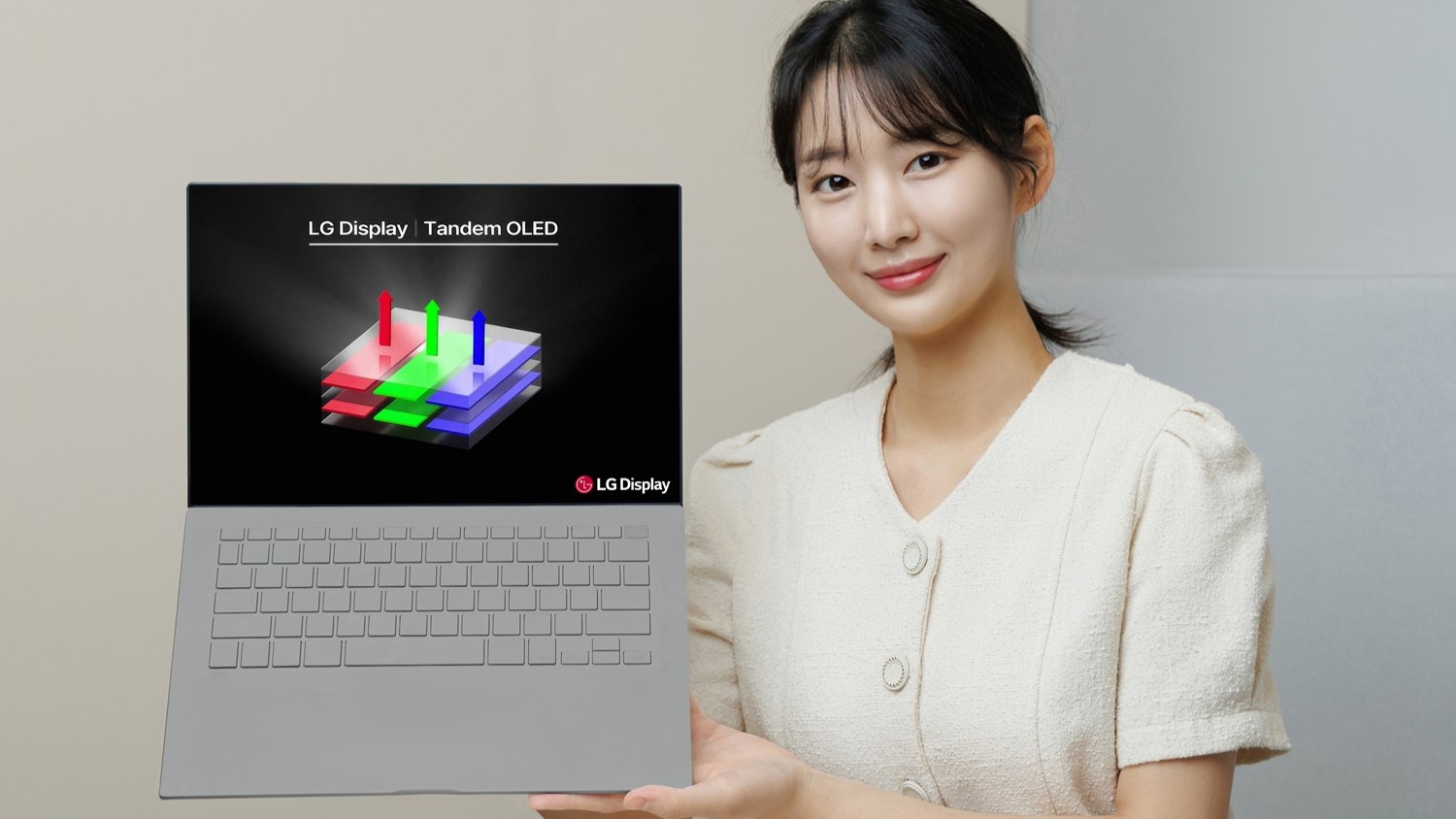LGhas begun mass production of its new Tandem OLED laptop display, according toa press releasepublished earlier today. The panel tech represents a generational step forward in display panels, and LG’s new variant will see its first use in the Dell XPS 13 2024 laptop.
Tandem OLED is a panel design that stacks two layers of organic light-emitting diodes on top of one another, creating tandem operation. The pair together can reach higher brightness than traditionalOLEDpanels for much less power draw. LG’s new laptop panel specifically is advertised as offering double the lifespan of traditional OLED panels, due to its 40% lower power draw. It can also go three times as bright as a standard panel, and supposedly even offers superior durability. The durability boon is a welcome surprise, especially considering an LG Tandem OLED panel is 40% thinner and 28% lighter than existing OLED laptop screens, making it seem potentially weaker on paper.

We’ve first seen Tandem OLED displays in the newM4 iPad Prosfrom Apple, which offer 1,000 nits full-screen brightness and 1,600 nits peak HDR brightness. Before this, Tandem OLED displays have seen use in automotive applications; cars have much higher standards for displays used inside, so the cutting-edge of display tech will often be seen in cars first. Their optimal use case is for high-end consumer displays, however, especially those that necessitate long use times like laptops or art displays.
LG’s new mass-produced panel has impressive specs, even for a non-Tandem OLED screen. The 13-inch 2880x1800 touchscreen display has great color accuracy and depth, reaching 100% of DCI-P3 color accuracy and a Display HDR True Black 500 rating, the second-highest rating available for HDR. However, it will be 60 Hz and only come with a peak SDR brightness of 400 nits.

The LG Tandem OLED panel’s first commercial application comes as the highest-tier screen available for the newestDell XPS 13, part of the first wave ofCopilot+ PCs. The display is a $300 upgrade from a standard XPS 13, the same price as the upgrade to a non-OLED 2K display (thoughDelllocks the Tandem display behind its more expensive higher-RAM variant).
Get Tom’s Hardware’s best news and in-depth reviews, straight to your inbox.
Sunny Grimm is a contributing writer for Tom’s Hardware. He has been building and breaking computers since 2017, serving as the resident youngster at Tom’s. From APUs to RGB, Sunny has a handle on all the latest tech news.